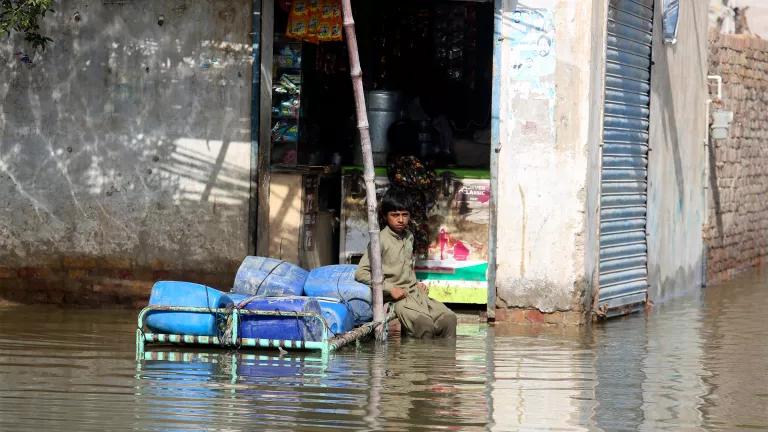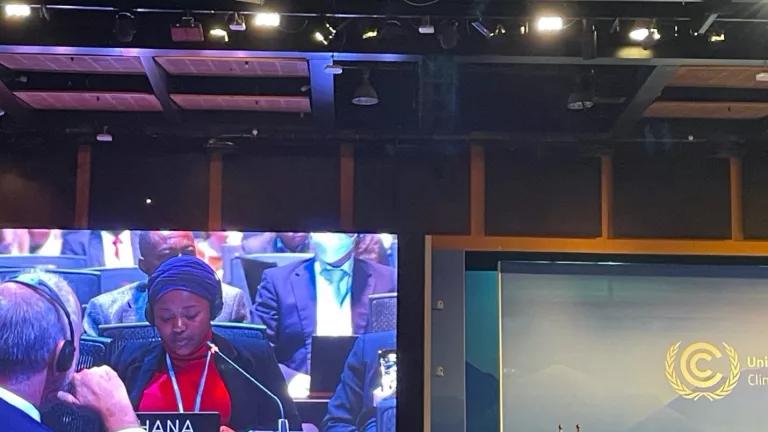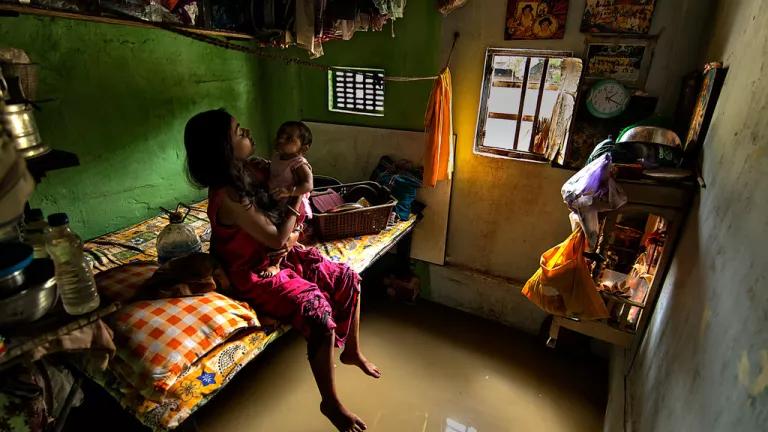Pakistan’s Climate Resiliency: Harbinger for the Global South
Pakistan is one of the five most climate vulnerable nations, evidenced by floods that claimed over 1,500 lives, injured over 12,000, and displaced up to 30 million people in August. In November, global leaders head into COP 27, where the focus will be on loss and damage, climate adaptation, and securing the financing for climate action. As part of the path forward to climate justice, global leaders need to support low- and middle-income nations that are bearing this inequitable climate burden.

Aerial view of flooding, Pakistan 2010
After intense monsoon floods and a 100-year storm, Pakistan is still grappling with the impacts of the severe disasters. With thousands of residents struggling to rebuild and local governments working to provide basic services to displaced residents, the central government has stepped in to provide aid. Yet as the climate crisis worsens, these disasters are expected to become more severe and frequent. On the eve of COP27, nations like Pakistan, with its relatively small carbon footprint, are facing devastating climate-induced impacts now and need aid and support to transition to a more climate-resilient infrastructure in the near future.
Pakistan experiences annual monsoon seasons, but this July and August brought record rains in Sindh and Balochistan, two predominantly rural provinces. Heavy monsoon rains in conjunction with flash floods led to catastrophic flooding, claiming more than 1,500 lives, injuring more than 12,000, and displacing up to 30 million people. Recovery efforts have continued but the provinces are struggling to return to normality. According to the Pakistan National Disaster Management Authority, more than 1 million homes were destroyed, and more than half a million people are living in temporary camps. There is little infrastructure and less funding to support environmental remediation and rebuilding, especially since this area also braved intense flooding in 2010. In the aftermath, there are far-reaching consequences for locals, like the increased spread of waterborne and vector diseases, interruptions to school services, and economic losses.
Unfortunately, this devastation came with little surprise. Climate-impacted extreme weather events like flooding and heat waves have steadily been on the rise in Pakistan, particularly in its most vulnerable regions. Damage from the flood is expected to be more than $10 billion, at an already precarious time for the government of Pakistan, as it was fighting to secure a $1 billion increase on a $3 billion dollar loan from the International Monetary Fund in the days before the flooding began. The people of Pakistan are faced with the crippling economic, health, and social tolls of this catastrophe. In addition, as the country with the most glaciers globally, its flooding risk is exacerbated by rapid glacial melt and the worsening weather extremes have led to fractures in the country’s hydroelectric energy system, further complicating the recovery. The inequity of this disaster is tangible. Globally, Pakistan contributes less than 1 percent of greenhouse gas emissions yet is ranked as one of the 10 most vulnerable nations to climate impacts.
Pakistan is not alone in this. The Global North has created this crisis through dirty energy infrastructure, greed, and consumerism, but it is the Global South that continues to pay the price. The United States and European Union, as well as China, have produced the most greenhouse gas emissions that drive climate change, yet they are holding back. As the global temperature rises, we are expected to see more extremes: heat waves, droughts, and extreme flooding that are not only more severe but that also target regions without generational experience or the infrastructure to face these coming storms. In 2022, we’ve already seen historic flooding in Bangladesh, severe storms in the Philippines, and now the devastation in Pakistan. Despite having the smallest carbon footprints and contributing the least to global climate change, low- and middle-income (LMI) nations are already facing stark climate impacts.
One key way to address these inequitable harms was shared by the Alliance of Small Island States (AOSIS) at the 2012 United Nations Climate Change Conference in Doha, Qatar. Loss and damages (L&D) support is a critical piece of global financing that can be offered to assuage the costs of these natural disasters in LMI nations. U.N. Secretary-General António Guterres, who visited Pakistan after the devastation, pushed the international community to support “debt reduction mechanisms” to support the recovery of Pakistan.
On the domestic front, the U.S. federal government and nonprofits are partnering to ensure low- and middle-income communities and marginalized groups are able to access resources, technical assistance, and support for climate adaptation, but this can only be done in conjunction with support for other nations facing impacts now. For every dollar spent on adaptation before natural disasters, we save $6 on disaster mitigation.
Not only is there an economic benefit to early and equitable international funding, but as the climate crisis worsens, these disasters increase displacement, global instability, and fuel the growing number of likely climate refugees. The United States sent $30 million in aid to Pakistan, but that pales in comparison to the damage sustained. In September, President Joe Biden announced a $2.9 billion humanitarian and global food security fund, with an impassioned plea: “We don’t have much time. We all know we’re already living in a climate crisis…Families are facing impossible choices, choosing which child to feed and wondering whether they will survive. This is the human cost of climate change. And it’s growing, not lessening.”
As climate impacts like sea level rise, desertification, threats to food and water supplies, and devastating economic losses intensify, nations are also experiencing a loss of biodiversity and cultural heritage. Already, these impacts have created damage beyond the ability of frontline nations and communities to address, while wealthy nations continue to emit dangerous emissions. The responsibility of global leaders is clear. LMI countries bear a disproportionate burden of the climate crisis that has clear and present consequences. The United States is responsible for the largest share of cumulative carbon dioxide emissions yet it has been shirking its duty in supporting key measures of climate-vulnerable countries. In November, global leaders head into COP27, where the focus will be on L&D, climate adaptation, and securing the financing for climate action. As part of the pathway forward to climate justice, global leaders need to support low- and middle-income nations that are bearing this inequitable climate burden through the funding of L&D and climate reparations. It’s time for China, the United States, and wealthy nations in the Global North to step up and take responsibility for their contributions to the global climate crisis.




